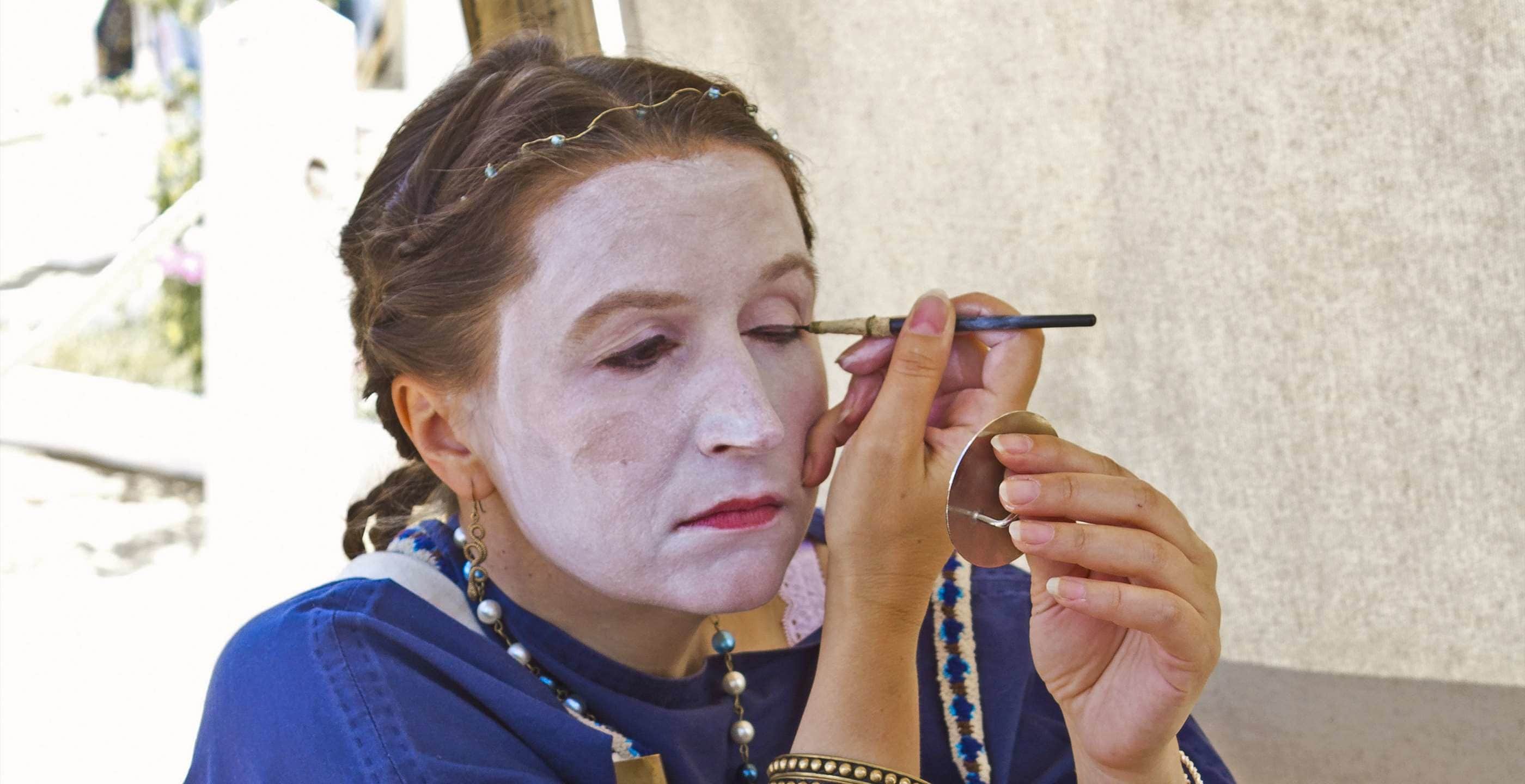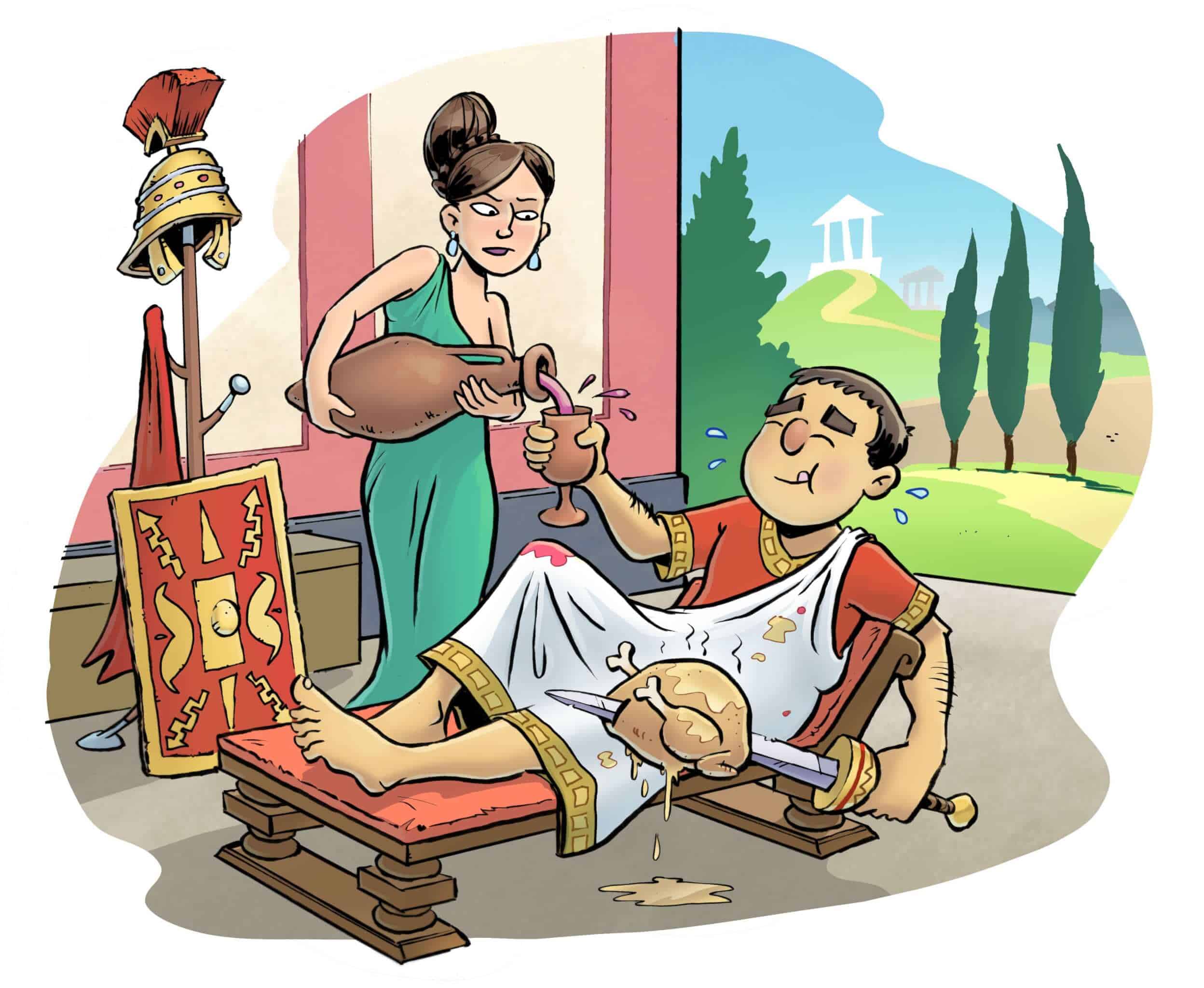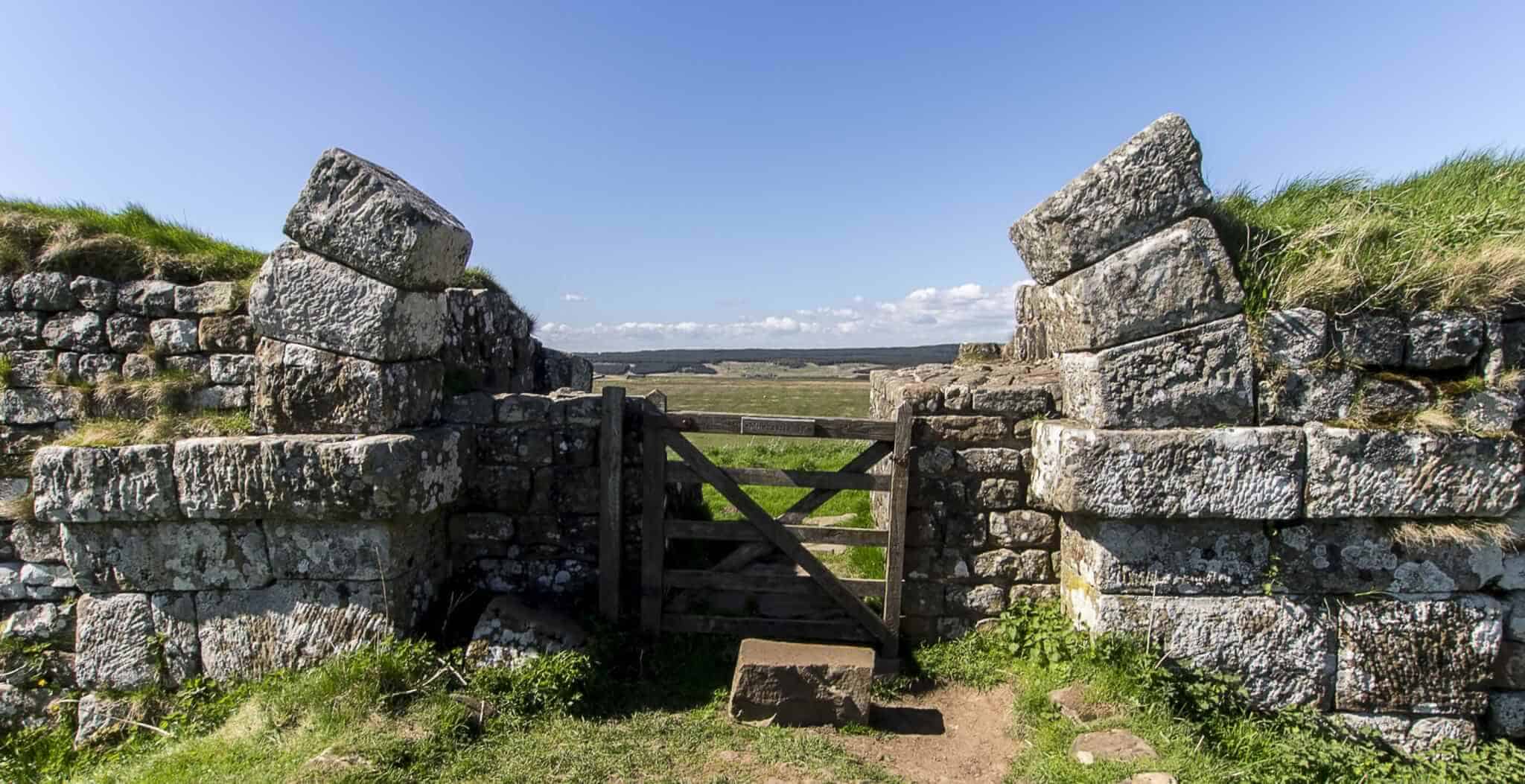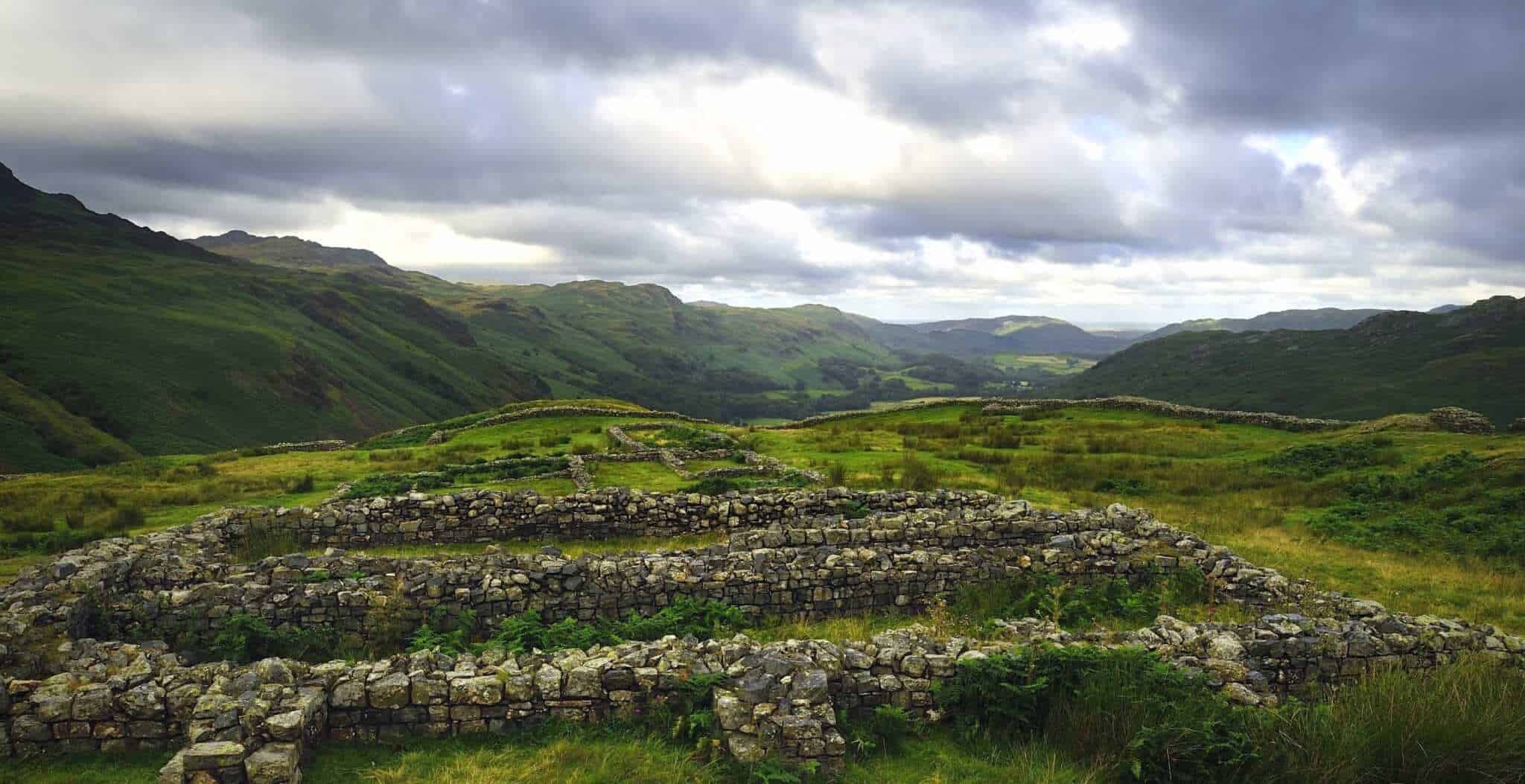For almost four centuries A.D.43-410, Britain was a small province of the Roman Empire. Archaeological evidence helps greatly in filling out the picture of the Roman woman of Britain during this time. One particular area in which archaeology has been most informative is that of beautification and personal care. The female toilette in Roman culture was fundamentally linked to the construction of a woman’s identity, signifying both her feminine identity and also her membership of the elite. In a patriarchal Roman society there were only a few ways a woman had available to express herself as a woman; one such way was through use of adornment, cosmetics and toilette.
Cosmetics made of expensive ingredients were shipped from across the Roman Empire and were an indicator of the disposable wealth available to a woman’s family. The time consuming labour that went into the making and application of some of these cosmetics spoke too of the leisured existence known to the elite. We know from ancient texts that some sections of Roman male society frowned upon the Roman woman’s use of cosmetics and the wearing of cosmetics was viewed as being emblematic of her inherent frivolousness and intellectual deficiency! Nevertheless, the reality of it was that women did wear and continued to wear cosmetics despite any criticism.
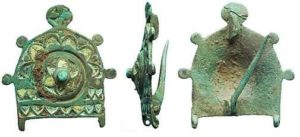 The Roman woman’s chatelaine brooch to which small toilette and cosmetic implements would have been attached. The Portable Antiquities Scheme/ The Trustees of the British Museum [CC BY-SA 2.0 (https://creativecommons.org/licenses/by-sa/2.0)]
The Roman woman’s chatelaine brooch to which small toilette and cosmetic implements would have been attached. The Portable Antiquities Scheme/ The Trustees of the British Museum [CC BY-SA 2.0 (https://creativecommons.org/licenses/by-sa/2.0)]
Many “Ancient Rome” departments in museums throughout Britain display a variety of toiletry and cosmetic items; mirrors, combs, unguent vessels, scoops, applications sticks and cosmetic grinders. Such cosmetic items and tools were often kept in a special casket. Collectively these items were once referred to as mundus muliebris, items belonging to a ‘woman’s world’. A representation of a woman and her maid with toiletry items and casket are represented on a panelled tombstone and can be viewed at The Grosvenor Museum in Cheshire.
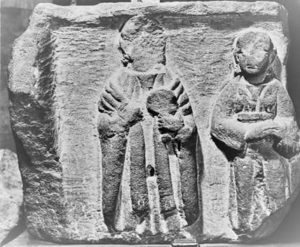 Tombstone shows woman with comb in right hand and mirror in left hand. She is attended by her maid who is carrying a casket for her toiletry items. The Grosvenor Museum, Cheshire.
Tombstone shows woman with comb in right hand and mirror in left hand. She is attended by her maid who is carrying a casket for her toiletry items. The Grosvenor Museum, Cheshire.
In classical times, the Latin term medicamentum was used when referring to what we now know as cosmetics. Descriptions of cosmetic items and ingredients used by Roman women to create their cosmetics can be read about in literary texts such as Pliny the Elder’s ‘Natural Histories’ and Ovid’s, ‘Medicamina Faciei Femineae’. Descriptions of what may have been the typical elite woman’s dressing room is detailed by several authors; creams displayed on tables, jars or containers in a myriad of colours, and many pots of rouge. We also learn from ancient texts that it was advisable that the lady’s dressing room door remain shut, not simply because of the repulsive sight and smell of some of the cosmetics but due to the fact that the end result may be attractive but the process is not! Often a woman would a have her own personal beautician prepare and apply her daily cosmetics. Where these preparations and applications had grown to a more elaborate operation, she may have required the use of a large group of beauticians and a team of specialised slaves may have been employed to carry out the task. Unctoristes would rub the woman’s skin with cosmetics, philiages and stimmiges applied her eye make-up and painted her brows. Ponceuses were the slaves who powdered the woman’s face whilst the catroptrices held the mirror.
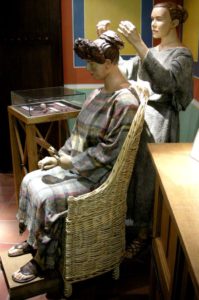 Reconstruction of Roman woman with polished metal mirror and slave at the Roman Museum, Canterbury, Kent. Licensed under the Creative Commons Attribution 3.0 Unported license.
Reconstruction of Roman woman with polished metal mirror and slave at the Roman Museum, Canterbury, Kent. Licensed under the Creative Commons Attribution 3.0 Unported license.
Fashion conscious Roman women created the desired appearance of large dark eyes, long dark lashes and the striking contrast of rouge on a pale complexion with ingredients which were widely sourced and often at great expense. Saffron sourced in Asia was a favourite; it was used as an eye-liner or eye shadow. Filaments of saffron were ground into a powder and applied with a brush or alternatively, the powder could be mixed with warm water and made into a solution for application.
Cerussa was one of several substances which could be used to create a pale complexion. Cerussa was made by pouring vinegar over white lead shavings and letting the lead dissolve. The resulting mixture was then dried and ground. A variety of substances could be used to make rouge powder; red ochre, a mineral pigment, was a popular choice. The best of red ochre was sourced from the Aegean. The ochre was ground on flat stone palettes or pulverised with grinders such as those in the collection at the British Museum. Small amounts of red ochre would have been crushed in the groove of the mortar to create sufficient amount of powder for the rouge.
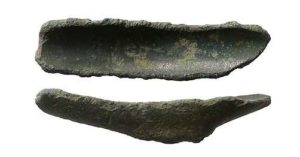 Roman cosmetic mortar: The Portable Antiquities Scheme / The Trustees of the British Museum [CC BY-SA 2.0 (https://creativecommons.org/licenses/by-sa/2.0)]
Roman cosmetic mortar: The Portable Antiquities Scheme / The Trustees of the British Museum [CC BY-SA 2.0 (https://creativecommons.org/licenses/by-sa/2.0)]
One of the most exciting archaeological discoveries concerning the Romano British woman is to be found on display at the Museum of London. It is a rare discovery. A small, exquisitely crafted tin canister dated from the middle of the second century A.D. was uncovered in a drain at the Roman temple complex in Tabard Square, Southwark.
Two thousand years ago someone closed this canister. In 2003 it was re-opened and it was discovered that remarkably, its organic contents had been preserved. The head of the research team commented on the uniqueness of such a discovery where the organic material inside a closed container was in such a high state of preservation. The soft cream contents of the container were chemically analysed and found to be a face cream which contained animal fat mixed with starch and tin oxide.
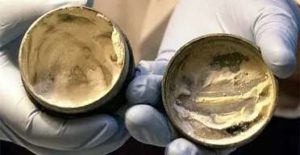 Roman pot containing 2,000-year old cream, complete with finger prints, found at Tabard Square, Southwark. Photograph: Anna Branthwaite /AP
Roman pot containing 2,000-year old cream, complete with finger prints, found at Tabard Square, Southwark. Photograph: Anna Branthwaite /AP
The research team recreated their own version of the cream, made with the same ingredients. It was found that when the cream was rubbed into the skin, the fat content melted to leave a residue with a smooth and powdery texture. The tin oxide ingredient in the cream was used as a pigment to create the white look for that fashionable pale skin appearance. The tin oxide would have been a substitute for ingredients such as cerussa. Unlike cerussa, tin was non-toxic. The tin oxide in this cosmetic could be sourced within Britannia; it was supplied by the Cornish tin industry.
The Southwark canister remains on display in the Museum of London. Unfortunately, the canister must of course remain sealed; open it and this 2000 year old cosmetic would dry up. The effects of the environment on this cosmetic denies us access to a further amazing aspect of this exceptional find; on the underside of the lid is the mark of two fingers dragged through the cream by the Roman woman last to use it.
By Laura McCormack, Historian and Researcher.
